Application of Image Sensors to Detect and Locate Electrical Discharges: A Review
Abstract
:1. Introduction
2. Sunlight Spectrum and the Solar-Blind Region
3. Corona and Sustained Spark Discharges
4. Charge-Coupled Devices (CCDs) and Complementary Metal Oxide Semiconductor (CMOS) Image Sensors
Front-Illuminated versus Back-Illuminated Image Sensors
5. Ultraviolet (UV) and Visible Imaging Applied to Corona Discharges
5.1. Quantification of the Intensity of Corona Discharges
5.2. Use of CCD Imagers to Detect, Locate, and Quantify Corona Discharges
5.3. Use of CMOS Imagers to Detect, Locate, and Quantify Corona Discharges
5.4. Use of Dual-Spectra Cameras to Detect, Locate, and Quantify Corona Discharges
5.5. Smartphone Image Sensors for Visible and UV Radiation Detection
5.6. Visible and UV Images of Corona and Spark Discharges
6. Identified Challenges and Research Needs
7. Conclusions
- -
- CCD image sensors, which offer good spatial resolution and linearity, as well as high quantum efficiency over a wide spectral range from gamma rays to the far-infrared, and present a low noise level;
- -
- CMOS image sensors, which offer substantial advantages, such as lower voltage supply, lower power consumption, longer battery life, and integration, thus allowing the manufacture of single-chip miniaturized digital cameras and high-speed imagers;
- -
- Solar-blind dual-spectra UV-visible cameras based on CCD or CMOS sensors to detect corona discharges, although they are bulky and very expensive;
- -
- Smartphone image sensors, which are increasingly used to detect electrical discharges due to their low cost, small size, and constant technological evolution.
Funding
Institutional Review Board Statement
Informed Consent Statement
Data Availability Statement
Acknowledgments
Conflicts of Interest
References
- Kim, J.; Kim, K.-I. Partial Discharge Online Detection for Long-Term Operational Sustainability of On-Site Low Voltage Distribution Network Using CNN Transfer Learning. Sustainability 2021, 13, 4692. [Google Scholar] [CrossRef]
- International Electrotechnical Commission. IEC 60270:2000 High-Voltage Test Techniques—Partial Discharge Measurements, 3rd ed.; International Electrotechnical Commission: Geneva, Switzerland, 2000. [Google Scholar]
- Muhr, M.; Schwarz, R. Experience with optical partial discharge detection. Mater. Sci. Pol. 2009, 27, 1139–1146. [Google Scholar]
- IEEE Power Engineering Society; Insulated Conductors Committee; Institute of Electrical and Electronics Engineers; IEEE-SA Standards Board. IEEE Guide for Partial Discharge Testing of Shielded Power Cable Systems in a Field Environment; IEEE: Piscataway, NJ, USA, 2007; p. 36. [Google Scholar]
- Rosle, N.; Muhamad, N.A.; Rohani, M.N.K.H.; Jamil, M.K.M. Partial discharges classification methods in xlpe cable: A review. IEEE Access 2021, 9, 133258–133273. [Google Scholar] [CrossRef]
- Xu, Y.; Yu, M.; Cao, X.; Qiu, C.; Chen, G. Comparison between optical and electrical methods for partial discharge measurement. Proc. IEEE Int. Conf. Prop. Appl. Dielectr. Mater. 2000, 1, 300–303. [Google Scholar] [CrossRef]
- da Costa, I.B.V.; Weber, G.H.; Gomes, D.F.; Galvão, J.R.; da Silva, M.J.; Pipa, D.R.; Ozcáriz, A.; Zamarreño, C.R.; Martelli, C.; Cardozo da Silva, J.C. Electric discharge detection and localization using a distributed optical fiber vibration sensor. Opt. Fiber Technol. 2020, 58, 102266. [Google Scholar] [CrossRef]
- Florkowski, M. Hyperspectral imaging of high voltage insulating materials subjected to partial discharges. Measurement 2020, 164, 108070. [Google Scholar] [CrossRef]
- Stone, G.C. Partial discharge diagnostics and electrical equipment insulation condition assessment. IEEE Trans. Dielectr. Electr. Insul. 2005, 12, 891–904. [Google Scholar] [CrossRef]
- Borghei, M.; Ghassemi, M. Discrimination of Single- and Multi-Source Corona Discharges using Deep Residual Network. In Proceedings of the 2021 IEEE Electric Ship Technologies Symposium (ESTS), Arlington, VA, USA, 3–6 August 2021. [Google Scholar] [CrossRef]
- Riba, J.-R.; Gomez-Pau, A.; Moreno-Eguilaz, M. Sensor Comparison for Corona Discharge Detection Under Low Pressure Conditions. IEEE Sens. J. 2020, 20, 11698–11706. [Google Scholar] [CrossRef]
- Souza, A.L.; Lopes, I.J.S. Experimental investigation of corona onset in contaminated polymer surfaces. IEEE Trans. Dielectr. Electr. Insul. 2015, 22, 1321–1331. [Google Scholar] [CrossRef]
- Kozioł, M.; Nagi, Ł.; Kunicki, M.; Urbaniec, I. Radiation in the Optical and UHF Range Emitted by Partial Discharges. Energies 2019, 12, 4334. [Google Scholar] [CrossRef] [Green Version]
- Vieira, A.L.; Silva, T.V.; de Sousa, F.S.I.; Senesi, G.S.; Júnior, D.S.; Ferreira, E.C.; Neto, J.A.G. Determinations of phosphorus in fertilizers by spark discharge-assisted laser-induced breakdown spectroscopy. Microchem. J. 2018, 139, 322–326. [Google Scholar] [CrossRef] [Green Version]
- Zachariades, C.; Shuttleworth, R.; Giussani, R. A Dual-Slot Barrier Sensor for Partial Discharge Detection in Gas-Insulated Equipment. IEEE Sens. J. 2020, 20, 860–867. [Google Scholar] [CrossRef]
- Burjupati, N.R.; Puhan, D.K.; Sharma, R. Opto Electronic Technique for Detection of Corona Discharges in Air and Oil. In Proceedings of the 2019 IEEE Electrical Insulation Conference (EIC), Calgary, AB, Canada, 16–19 June 2019; pp. 184–187. [Google Scholar] [CrossRef]
- Borghei, M.; Ghassemi, M. Separation and Classification of Corona Discharges under Low Pressures Based on Deep Learning Method. IEEE Trans. Dielectr. Electr. Insul. 2022, 29, 319–326. [Google Scholar] [CrossRef]
- Anis, H.; Srivastava, K.D. Pre-breakdown Discharges in Highly Non-uniform Fields in Relation to Gas-insulated Systems. IEEE Trans. Electr. Insul. 1982, EI-17, 131–142. [Google Scholar] [CrossRef]
- Rudd, S.; McArthur, S.D.J.; Judd, M.D. A generic knowledge-based approach to the analysis of partial discharge data. IEEE Trans. Dielectr. Electr. Insul. 2010, 17, 149–156. [Google Scholar] [CrossRef] [Green Version]
- IEEE. The Authoritative Dictionary of IEEE Standards Terms, 7th ed.; IEEE Std 100-2000; IEEE: Piscataway, NJ, USA, 2000; pp. 1–1362. [Google Scholar]
- Zhang, C.; Yi, Y.; Wang, L. Positive dc corona inception on dielectric-coated stranded conductors in air. IET Sci. Meas. Technol. 2016, 10, 557–563. [Google Scholar] [CrossRef]
- Hernández-Guiteras, J.; Riba, J.-R.; Casals-Torrens, P. Determination of the corona inception voltage in an extra high voltage substation connector. IEEE Trans. Dielectr. Electr. Insul. 2013, 20, 82–88. [Google Scholar] [CrossRef]
- Emersic, C.; Lowndes, R.; Cotton, I.; Rowland, S.; Freer, R. The effects of pressure and temperature on partial discharge degradation of silicone conformai coatings. IEEE Trans. Dielectr. Electr. Insul. 2017, 24, 2986–2994. [Google Scholar] [CrossRef] [Green Version]
- Sun, Y.; Chen, Y.; Ci, W.; Liang, J.; Dong, J.; Wang, H.; Zhang, B. Application of Robot Detection Equipped with Ultraviolet Imaging. In Proceedings of the 2021 IEEE 4th Advanced Information Management, Communicates, Electronic and Automation Control Conference (IMCEC), Chongqing, China, 18–20 June 2021; pp. 408–411. [Google Scholar] [CrossRef]
- Ogundiran, Y.L.; Griffo, A.; Sundeep, S.; Gonzalez, F.A.; Wang, J. A Novel Ring-Shaped Fractal Antenna for Partial Discharge Detection. In Proceedings of the 2021 IEEE Energy Conversion Congress and Exposition (ECCE), Vancouver, BC, Canada, 10–14 October 2021; pp. 5111–5117. [Google Scholar] [CrossRef]
- Benmamas, L.; Teste, P.; Krebs, G.; Odic, E.; Vangraefschepe, F.; Hamiti, T. Contribution to partial discharge analysis in inverter-fed motor windings for automotive application. In Proceedings of the 2017 IEEE Electrical Insulation Conference (EIC), Baltimore, MD, USA, 11–14 June 2017; pp. 348–351. [Google Scholar] [CrossRef]
- Driendl, N.; Pauli, F.; Hameyer, K. Influence of Ambient Conditions on the Qualification Tests of the Interturn Insulation in Low-Voltage Electrical Machines. IEEE Trans. Ind. Electron. 2022, 69, 7807–7816. [Google Scholar] [CrossRef]
- Sefl, O.; Prochazka, R.; Haller, R.; Monkman, G.J. Alternative Approach to Optical Detection of Partial Discharges in Air. In Proceedings of the 2021 IEEE Conference on Electrical Insulation and Dielectric Phenomena (CEIDP), Vancouver, BC, Canada, 12–15 December 2021; pp. 324–327. [Google Scholar] [CrossRef]
- Renker, D.; Lorenz, E. Advances in solid state photon detectors. J. Instrum. 2009, 4, P04004. [Google Scholar] [CrossRef]
- Sadler, B.M.; Abou-Galala, F.; Chen, G.; Xu, Z. Experimental evaluation of LED-based solar blind NLOS communication links. Opt. Express 2008, 16, 15059–15068. [Google Scholar] [CrossRef]
- Ren, M.; Zhou, J.; Song, B.; Zhang, C.; Dong, M.; Albarracín, R. Towards Optical Partial Discharge Detection with Micro Silicon Photomultipliers. Sensors 2017, 17, 2595. [Google Scholar] [CrossRef] [PubMed] [Green Version]
- Riba, J.-R.; Gómez-Pau, Á.; Moreno-Eguilaz, M. Experimental Study of Visual Corona under Aeronautic Pressure Conditions Using Low-Cost Imaging Sensors. Sensors 2020, 20, 411. [Google Scholar] [CrossRef] [Green Version]
- Wang, X.; Zhang, Y. Insulator identification from aerial images using Support Vector Machine with background suppression. In Proceedings of the 2016 International Conference on Unmanned Aircraft Systems (ICUAS), Arlington, VA, USA, 7–10 June 2016; pp. 892–897. [Google Scholar] [CrossRef]
- Pernebayeva, D.; Irmanova, A.; Sadykova, D.; Bagheri, M.; James, A. High voltage outdoor insulator surface condition evaluation using aerial insulator images. High Volt. 2019, 4, 178–185. [Google Scholar] [CrossRef]
- Ibrahim, A.; Dalbah, A.; Abualsaud, A.; Tariq, U.; El-Hag, A. Application of Machine Learning to Evaluate Insulator Surface Erosion. IEEE Trans. Instrum. Meas. 2020, 69, 314–316. [Google Scholar] [CrossRef]
- RadhaKrishna, M.V.V.; Venkata Govindh, M.; Krishna Veni, P. A Review on Image Processing Sensor. J. Phys. Conf. Ser. 2021, 1714, 012055. [Google Scholar] [CrossRef]
- Gouveia, L.C.P.; Choubey, B. Advances on CMOS image sensors. Sens. Rev. 2016, 36, 231–239. [Google Scholar] [CrossRef] [Green Version]
- Huang, C.C.; Huang, J.K.T.; Lee, C.W.; Lin, C.J. A CMOS active pixel sensor with light intensity filtering characteristics for image thresholding application. IEEE Sens. J. 2012, 12, 1289–1293. [Google Scholar] [CrossRef]
- Boyle, W.S.; Smith, G.E. Charge Coupled Semiconductor Devices. Bell Syst. Tech. J. 1970, 49, 587–593. [Google Scholar] [CrossRef]
- Litwiller, D. CCD vs. CMOS: Facts and Fiction. Photonics Spectra 2001, 35, 154–158. [Google Scholar]
- Choi, B.S.; Kim, S.H.; Lee, J.; Seong, D.; Shin, J.K.; Lim, J.; Chang, S.; Park, J.; Lee, S.J.; Kyung, C.M. In-Pixel Aperture CMOS Image Sensor for 2-D and 3-D Imaging. IEEE Sens. J. 2018, 18, 9163–9168. [Google Scholar] [CrossRef]
- De Graaf, G.; Wolffenbuttel, R.F. Illumination Source Identification Using a CMOS Optical Microsystem. IEEE Trans. Instrum. Meas. 2004, 53, 238–242. [Google Scholar] [CrossRef]
- Correia, R.G.; Pimenta, S.; Minas, G. CMOS Integrated Photodetectors and Light-to-Frequency Converters for Spectrophotometric Measurements. IEEE Sens. J. 2017, 17, 3438–3445. [Google Scholar] [CrossRef]
- Minas, G.; De Graaf, G.; Wolffenbuttel, R.F.; Correia, J.H. An MCM-based microsystem for colorimetric detection of biomolecules in biological fluids. IEEE Sens. J. 2006, 6, 1003–1008. [Google Scholar] [CrossRef]
- Riba, J.-R.; Moreno-Eguilaz, M.; Boizieau, M.; Ibrayemov, T. Performance Evaluation of Solar-Blind Gas-Filled Sensors to Detect Electrical Discharges for Low-Pressure Aircraft Applications. Sensors 2022, 22, 492. [Google Scholar] [CrossRef]
- Sliney, D.H. What is light? The visible spectrum and beyond. Eye 2016, 30, 222–229. [Google Scholar] [CrossRef] [Green Version]
- ASTM G173-03(2020); Standard Tables for Reference Solar Spectral Irradiances: Direct Normal and Hemispherical on 37° Tilted Surface 2020. ASTM: West Conshohocken, PA, USA, 2020; pp. 1–21.
- Li, Z.; Li, L.; Jiang, X.; Hu, J.; Zhang, Z.; Zhang, W. Effects of Different Factors on Electrical Equipment UV Corona Discharge Detection. Energies 2016, 9, 369. [Google Scholar] [CrossRef] [Green Version]
- Ofil Ltd. UV Solar Blind Filters, Imagers and Detectors. Available online: http://ofil-ltd.www1.50megs.com/ (accessed on 5 June 2022).
- Schreiber, P.; Dang, T.; Pickenpaugh, T.; Smith, G.A.; Gehred, P.; Litton, C.W. Solar-blind UV region and UV detector development objectives. In Optoelectronics’ 99—Integrated Optoelectronic Devices; SPIE: San Jose, CA, USA, 1999; Volume 3629, pp. 230–248. [Google Scholar]
- Schühle, U.; Hochedez, J.-F. Solar-blind UV detectors based on wide band gap semiconductors. In Observing Photons in Space; Springer: New York, NY, USA, 2013; pp. 467–477. [Google Scholar]
- Fossum, E.R.; Hondongwa, D.B. A review of the pinned photodiode for CCD and CMOS image sensors. IEEE J. Electron Devices Soc. 2014, 2, 33–43. [Google Scholar] [CrossRef]
- Garnir, H.P.; Lefèbvre, P.H. Quantum efficiency of back-illuminated CCD detectors in the VUV region (30–200 nm). Nucl. Instrum. Methods Phys. Res. Sect. B Beam Interact. Mater. Atoms 2005, 235, 530–534. [Google Scholar] [CrossRef]
- De Campos Da Costa, J.P.; Gounella, R.H.; Bastos, W.B.; Longo, E.; Carmo, J.P. Photovoltaic Sub-Module with Optical Sensor for Angular Measurements of Incident Light. IEEE Sens. J. 2019, 19, 3111–3120. [Google Scholar] [CrossRef]
- Alfaraj, N. A Review of Charge-Coupled Device Image Sensors; University of Toronto: Toronto, ON, Canada, 2017. [Google Scholar]
- Bosiers, J.T.; Peters, I.M.; Draijer, C.; Theuwissen, A. Technical challenges and recent progress in CCD imagers. Nucl. Instrum. Methods Phys. Res. Sect. A Accel. Spectrometers Detect. Assoc. Equip. 2006, 565, 148–156. [Google Scholar] [CrossRef]
- Lee, H.; Jeong, Y.-J.; Yoon, J.; Kang, J.; Lee, S.; Shin, H.; Lee, K. Feasibility study of CCD-based gamma camera. Proc. SPIE Int. Soc. Opt. Eng. 2010, 7805, 271–277. [Google Scholar] [CrossRef]
- Katikala, H.B.; Pitchaiah, T.; Murthy, G.R. Low Readout Noise Photodiode based CMOS Image Sensor with High Fill Factor for Biomedical application. In Proceedings of the 2022 IEEE Delhi Section Conference (DELCON), New Delhi, India, 11–13 February 2022. [Google Scholar] [CrossRef]
- Bigas, M.; Cabruja, E.; Forest, J.; Salvi, J. Review of CMOS image sensors. Microelectron. J. 2006, 37, 433–451. [Google Scholar] [CrossRef] [Green Version]
- Mehta, S.; Patel, A.; Mehta, J. CCD or CMOS Image sensor for photography. In Proceedings of the 2015 International Conference on Communications and Signal Processing (ICCSP), Melmaruvathur, India, 2–4 April 2015; pp. 291–294. [Google Scholar] [CrossRef]
- Abe, H. Device technologies for high quality and smaller pixel in CCD and CMOS image sensors. In Proceedings of the IEDM Technical Digest. IEEE International Electron Devices Meeting, San Francisco, CA, USA, 13–15 December 2004; pp. 989–992. [Google Scholar] [CrossRef]
- Stanger, L.; Wilkes, T.; Boone, N.; McGonigle, A.; Willmott, J. Thermal Imaging Metrology with a Smartphone Sensor. Sensors 2018, 18, 2169. [Google Scholar] [CrossRef] [PubMed] [Green Version]
- Wilkes, T.; McGonigle, A.; Pering, T.; Taggart, A.; White, B.; Bryant, R.; Willmott, J. Ultraviolet Imaging with Low Cost Smartphone Sensors: Development and Application of a Raspberry Pi-Based UV Camera. Sensors 2016, 16, 1649. [Google Scholar] [CrossRef] [PubMed] [Green Version]
- Blanc, N. CCD versus CMOS—Has CCD imaging come to an end? In Photogrammetric Week 2001; Vichmann Verlag: Stuttgart, Germany, 2001; pp. 131–137. [Google Scholar]
- Prasad, D.S.; Reddy, B.S. Digital image processing techniques for estimating power released from the corona discharges. IEEE Trans. Dielectr. Electr. Insul. 2017, 24, 75–82. [Google Scholar] [CrossRef]
- Fahrni, T.; Kuhn, M.; Sommer, P.; Wattenhofer, R.; Welten, S. Sundroid: Solar radiation awareness with smartphones. In Proceedings of the UbiComp 2011: Ubiquitous Computing, 13th International Conference, Beijing, China, 17–21 September 2011; pp. 365–374. [Google Scholar] [CrossRef]
- Weiss, A.; Geisler, R.; Schwermer, T.; Yorita, D.; Henne, U.; Klein, C.; Raffel, M. Single-shot pressure-sensitive paint lifetime measurements on fast rotating blades using an optimized double-shutter technique. Exp. Fluids 2017, 58, 120. [Google Scholar] [CrossRef] [Green Version]
- Morimoto, K.; Morimoto, K.; Charbon, E. High fill-factor miniaturized SPAD arrays with a guard-ring-sharing technique. Opt. Express 2020, 28, 13068–13080. [Google Scholar] [CrossRef]
- Zang, C.; Xinjie, Z.; Shuang, H.; Lei, H.; Zhenglong, J.; Huisheng, Y.; Zhiwen, J. Research on mechanism and ultraviolet imaging of corona discharge of electric device faults. In Proceedings of the Conference Record of the 2008 IEEE International Symposium on Electrical Insulation, Vancouver, BC, Canada, 9–12 June 2008; pp. 690–693. [Google Scholar] [CrossRef]
- Riba, J.-R.; Bas-Calopa, P.; Moreno-Eguilaz, M. Analysing the Influence of Geometry and Pressure on Corona Discharges. Eur. J. Phys. 2022, 43, 055201. [Google Scholar] [CrossRef]
- Grum, F.; Costa, L.F. Spectral emission of corona discharges. Appl. Opt. 1976, 15, 76–79. [Google Scholar] [CrossRef]
- Nagi, Ł.; Kozioł, M.; Wotzka, D. Analysis of the spectrum of electromagnetic radiation generated by electrical discharges. IET Sci. Meas. Technol. 2019, 13, 812–817. [Google Scholar] [CrossRef]
- Nagi, Ł.; Kozioł, M.; Zygarlicki, J. Optical Radiation from an Electric Arc at Different Frequencies. Energies 2020, 13, 1676. [Google Scholar] [CrossRef] [Green Version]
- Garcia, J.E.; Dyer, A.G.; Greentree, A.D.; Spring, G.; Wilksch, P.A. Linearisation of RGB Camera Responses for Quantitative Image Analysis of Visible and UV Photography: A Comparison of Two Techniques. PLoS ONE 2013, 8, e79534. [Google Scholar] [CrossRef] [Green Version]
- Liu, Y.; Lai, T.; Liu, J.; Li, Y.; Yang, J.; Pei, S. 110 kV insulator contamination diagnosis method based on UV imaging. In Proceedings of the 2021 IEEE International Conference on Electrical Engineering and Mechatronics Technology (ICEEMT), Qingdao, China, 2–4 July 2021; pp. 347–350. [Google Scholar] [CrossRef]
- Zhou, W.; Li, H.; Yi, X.; Tu, J.; Yu, J. A criterion for UV detection of AC corona inception in a rod-plane air gap. IEEE Trans. Dielectr. Electr. Insul. 2011, 18, 232–237. [Google Scholar] [CrossRef]
- Maistry, N. Investigating the concept of Fraunhofer lines as a potential method to detect corona in the wavelength region 338 nm–405 nm during the day. In 19th International Symposium on High Voltage Engineering; Elsevier: Pilsen, Czech Republic, 2015; pp. 1–61. [Google Scholar]
- Gounella, R.H.; Granado, T.C.; Da Costa, J.P.C.; Carmo, J.P. Optical Filters for Narrow Band Light Adaptation on Imaging Devices. IEEE J. Sel. Top. Quantum Electron. 2021, 27, 7200508. [Google Scholar] [CrossRef]
- TD90 UV Ray Sensitive Camera, Ultraviolet Light Camera Manufacturer. Available online: https://www.ulirvisiontech.com/products/uv-see-corona-camera-td90.html (accessed on 5 June 2022).
- Corona Camera. Available online: https://infraredcameras.com/products/corona-camera (accessed on 7 June 2022).
- Uvirco Technologies (Pty) Ltd. The Original Corona Camera Manufacturer. Available online: https://www.uvirco.com/ (accessed on 7 June 2022).
- Williams, A.R.; Williams, G.F. The invisible image—A tutorial on photography with invisible radiation, Part 1: Introduction and reflected ultraviolet techniques. J. Biol. Photogr. 1993, 61, 115–132. [Google Scholar]
- Ray, S.F. Applied Photographic Optics: Lenses and Optical Systems for Photography, Film, Video, Electronic and Digital Imaging; Routledge: New York, NY, USA, 2002. [Google Scholar] [CrossRef]
- Pinnangudi, B.; Gorur, R.S.S.; Kroese, A.J.J. Quantification of corona discharges on nonceramic insulators. IEEE Trans. Dielectr. Electr. Insul. 2005, 12, 513–523. [Google Scholar] [CrossRef]
- Prasad, D.S.; Reddy, B.S. Image Saturation as a Tool to Understand the Corona Induced Degradation of Polymeric Insulators. IEEE Trans. Dielectr. Electr. Insul. 2020, 27, 1837–1844. [Google Scholar] [CrossRef]
- Prasad, D.S.; Reddy, B.S. Understanding Corona Discharges using Digital Imaging. In Proceedings of the 2018 IEEE International Conference on High Voltage Engineering and Application (ICHVE), Athens, Greece, 10–13 September 2018; pp. 1–4. [Google Scholar]
- Riba, J.-R.; Gómez-Pau, Á.; Moreno-Eguilaz, M. Insulation Failure Quantification Based on the Energy of Digital Images Using Low-Cost Imaging Sensors. Sensors 2020, 20, 7219. [Google Scholar] [CrossRef]
- Riba, J.-R.; Abomailek, C.; Casals-Torrens, P.; Capelli, F. Simplification and cost reduction of visual corona tests. IET Gener. Transm. Distrib. 2018, 12, 834–841. [Google Scholar] [CrossRef] [Green Version]
- Yan, D.; Zhang, Z.; Gong, H.; Ya, Y. Effect of barbed tubular electrode corona discharge EHD flow on submicron particle collection in a wide-type ESP. J. Electrostat. 2021, 109, 103545. [Google Scholar] [CrossRef]
- Pinchuk, M.E.; Lazukin, A.V.; Stepanova, O.M. Gas temperature spatial distribution in air corona discharge with plane comb of metal rod electrodes derived from schlieren images. J. Phys. Conf. Ser. 2021, 1787, 012057. [Google Scholar] [CrossRef]
- Raulf, T.; Claudi, A.; Zander, R.; Fuchs, C. Evaluation of a Charged Coupled Device Camera for the Detection of Ultraviolet Emissions by Corona Discharges. Lect. Notes Electr. Eng. 2020, 599, 941–951. [Google Scholar] [CrossRef]
- Kurimský, J.; Rajňák, M.; Cimbala, R.; Rajnič, J.; Timko, M.; Kopčanský, P. Effect of magnetic nanoparticles on partial discharges in transformer oil. J. Magn. Magn. Mater. 2020, 496, 165923. [Google Scholar] [CrossRef]
- Jula, N.; Alexandru, S.; Teodor Lucian, G. A new approach related to the corona discharge surveillance. Mircea Cel Batran Nav. Acad. Sci. Bull. 2016, 19, 225–230. [Google Scholar] [CrossRef]
- Qian, Y.; Zhou, X.; Kong, X.; Wu, Y.; Tang, X.; Zhang, Y. The dual-channel ultraviolet/low light CMOS camera using image fusion technique. In Proceedings of the Radiation Detectors in Medicine, Industry, and National Security XVIII, San Diego, CA, USA, 9–10 August 2017; Volume XVIII, p. 103930X. [Google Scholar]
- Okino, T.; Yamahira, S.; Yamada, S.; Hirose, Y.; Odagawa, A.; Kato, Y.; Tanaka, T. A Real-Time Ultraviolet Radiation Imaging System Using an Organic Photoconductive Image Sensor. Sensors 2018, 18, 314. [Google Scholar] [CrossRef] [Green Version]
- Tith, S.; Chankow, N.; Tith, S.; Chankow, N. Measurement of Gamma-Rays Using Smartphones. Open J. Appl. Sci. 2016, 6, 31–37. [Google Scholar] [CrossRef] [Green Version]
- Guo, Z.; Ye, Q.; Wang, Y.; Han, M. Study of the Development of Negative DC Corona Discharges on the Basis of Visible Digital Images. IEEE Trans. Plasma Sci. 2020, 48, 2509–2514. [Google Scholar] [CrossRef]
- Prasad, D.S.; Reddy, B.S.; Shakthi Prasad, D.; Subba Reddy, B. Study of corona degradation of polymeric insulating samples using high dynamic range imaging technique. IEEE Trans. Dielectr. Electr. Insul. 2017, 24, 1169–1177. [Google Scholar] [CrossRef]
- Pi-Camera Spectral Response Curves by Khufkens. Available online: http://bluegreen-labs.github.io/raspberry_pi_camera_responses/ (accessed on 17 December 2019).
- Abomailek, C.; Riba, J.-R.; Casals-Torrens, P. Feasibility analysis of reduced-scale visual corona tests in high-voltage laboratories. IET Gener. Transm. Distrib. 2019, 13, 2543–2549. [Google Scholar] [CrossRef] [Green Version]
- Nakamura, H.; Ohyama, R. An image analysis of positive ionic wind velocity under the DC corona discharge in needle-cylinder electrode system. In Proceedings of the 2009 IEEE Conference on Electrical Insulation and Dielectric Phenomena, Virginia Beach, VA, USA, 18–21 October 2009; pp. 192–195. [Google Scholar] [CrossRef]
- Zhu, Y.; Yamashita, S.; Anami, N.; Otsubo, M.; Honda, C.; Hashimoto, Y. Corona discharge phenomenon and behavior of water droplets on the surface of polymer in the AC electric field. In Proceedings of the 7th International Conference on Properties and Applications of Dielectric Materials, Nagoya, Japan, 1–5 June 2003; Volume 2, pp. 638–641. [Google Scholar] [CrossRef]
- Ohyama, S.; Ohyama, R. Ionic wind characteristics of an EHD micro gas pump constructed with needle-ring electrode system. In Proceedings of the 2011 Annual Report Conference on Electrical Insulation and Dielectric Phenomena, Cancun, Mexico, 16–19 October 2011; pp. 227–230. [Google Scholar] [CrossRef]
- Riba, J.R.; Bogarra, S.; Gómez-Pau, Á.; Moreno-Eguilaz, M. Experimental Study of the Corona Performance of Aged Sand-Cast Substation Connectors. Energies 2020, 13, 2785. [Google Scholar] [CrossRef]
- Riba, J.-R.; Morosini, A.; Capelli, F. Comparative Study of AC and Positive and Negative DC Visual Corona for Sphere-Plane Gaps in Atmospheric Air. Energies 2018, 11, 2671. [Google Scholar] [CrossRef] [Green Version]
- Wang, Y.; Qian, Y.; Kong, X. Photon Counting Based on Solar-Blind Ultraviolet Intensified Complementary Metal-Oxide-Semiconductor (ICMOS) for Corona Detection. IEEE Photonics J. 2018, 10, 7000919. [Google Scholar] [CrossRef]
- Davari, N.; Akbarizadeh, G.; Mashhour, E. Intelligent Diagnosis of Incipient Fault in Power Distribution Lines Based on Corona Detection in UV-Visible Videos. IEEE Trans. Power Deliv. 2021, 36, 3640–3648. [Google Scholar] [CrossRef]
- Zhang, Z.; Zhang, W.; Zhang, D.; Xiao, Y.; Deng, J.; Xia, G. Comparison of different characteristic parameters acquired by UV imager in detecting corona discharge. IEEE Trans. Dielectr. Electr. Insul. 2016, 23, 1597–1604. [Google Scholar] [CrossRef]
- Chen, T.; Yuan, S.; Li, J.; Xing, S.; Zhang, H.; Dong, Y.; Chen, L.; Liu, P.; Jiao, G. Image registration for a UV–Visible dual-band imaging system. Opt. Lasers Eng. 2018, 105, 209–218. [Google Scholar] [CrossRef]
- Cardoso, J.A.A.; Filho, O.O.; de Mello, D.R. Use of UV cameras for corona tests in high volatge laboratory. In Proceedings of the 16th International Symposium on High Voltage Engineering, Johannesburg, South Africa, 24–28 August 2009; pp. 1–6. [Google Scholar]
- Coetzer, C.; Becker, T.; West, N.; Leuschner, W. Investigating an Alternate Detector for Solar-blind Ultraviolet Cameras for High-Voltage Inspection. In Proceedings of the 2021 Southern African Universities Power Engineering Conference/Robotics and Mechatronics/Pattern Recognition Association of South Africa (SAUPEC/RobMech/PRASA), Potchefstroom, South Africa, 27–29 January 2021; Institute of Electrical and Electronics Engineers Inc.: Potchefstroom, South Africa, 2021; pp. 1–6. [Google Scholar]
- Skubis, J.; Kozioł, M. Assessment of Partial Discharges in the Air by Application of Corona Camera. Appl. Sci. 2021, 11, 8595. [Google Scholar] [CrossRef]
- Chrzanowski, K.B. Stafiej Measurement of sensitivity of solar blind UV cameras to solar light. Opto-Electronics Rev. 2021, 29, 45–58. [Google Scholar] [CrossRef]
- Maistry, N.; Schutz, R.A.; Cox, E. The Quantification of Corona Discharges on High Voltage Electrical Equipment in the UV Spectrum using a Corona Camera; Institute of Electrical and Electronics Engineers Inc.: Piscataway, NJ, USA, 2018. [Google Scholar]
- Wang, Y.; Qian, Y. Evaluation method for the corona discharge of insulator based on convolution neural network with the dual-spectra camera. Opt. Eng. 2020, 59, 103105. [Google Scholar] [CrossRef]
- Wang, Y.; Qian, Y. Characteristics of the corona discharge of polymer insulators based on solar-blind ultraviolet images. Opt. Eng. 2019, 58, 113102. [Google Scholar] [CrossRef]
- Coetzer, C.J.; West, N. Radiometric calibration and measurement algorithm for electrical inspection solar-blind ultraviolet cameras. Opto-Electronics Rev. 2022, 30, 140128. [Google Scholar] [CrossRef]
- Lu, Y.; Hu, C.; Liu, Y.; Liu, Z.; Luo, R.; Tian, D. Study on the Change of Photon Number with Humidity in UV Detection of External Insulation Corona Discharge and Its Correction Method. In Proceedings of the 2021 4th International Conference on Energy, Electrical and Power Engineering (CEEPE), Chongqing, China, 23–25 April 2021; pp. 356–360. [Google Scholar] [CrossRef]
- Coetzer, C.; Djeumen, J.; West, N.; Becker, T.; Walker, J.; Leuschner, W. Status quo and aspects to consider with ultraviolet optical versus high voltage energy relation investigations. In Proceedings of the Fifth Conference on Sensors, MEMS, and Electro-Optic Systems, Skukuza, South Africa, 8–10 October 2018; SPIE: Skukuza, South Africa, 2019; Volume 11043, pp. 388–403. [Google Scholar]
- Urbaniec, I.; Fracz, P. Application of UV camera for PD detection on long rod HV insulator. Meas. Autom. Monit. 2015, 61, 64–67. [Google Scholar]
- Liu, Y.; Yang, J.; Ma, Z.; Li, Y.; Liu, J.; Lai, T. Analysis of the Influence of Various Factors on the Ultraviolet Discharge Detection of 110kV Contaminated Insulators. In Proceedings of the 2021 IEEE International Conference on Electrical Engineering and Mechatronics Technology (ICEEMT), Qingdao, China, 2–4 July 2021; pp. 318–321. [Google Scholar] [CrossRef]
- Wang, S.; Lu, F.; Chen, L.; Li, H. Study of polymeric insulator external insulation based on UV imaging method. In Proceedings of the 2009 IEEE 9th International Conference on the Properties and Applications of Dielectric Materials, Harbin, China, 19–23 July 2009; pp. 1043–1046. [Google Scholar] [CrossRef]
- Pang, M.-S.; Kim, W.-J.; Kim, Y.-S.; Kim, S.-H. Corona Discharge Characteristics of Transformer Bushing Model with Contaminnations in Air. J. Korean Inst. Illum. Electr. Install. Eng. 2012, 26, 91–96. [Google Scholar] [CrossRef]
- Stranges, M.K.W.W.; Ul Haq, S.; Dunn, D.G. Black-out test versus UV camera for corona inspection of HV motor stator endwindings. IEEE Trans. Ind. Appl. 2014, 50, 3135–3140. [Google Scholar] [CrossRef]
- Moore, A.J.; Schubert, M.; Rymer, N. Technologies and Operations for High Voltage Corona Detection with UAVs. In Proceedings of the 2018 IEEE Power & Energy Society General Meeting (PESGM), Portland, OR, USA, 5–10 August 2018. [Google Scholar]
- da Silva, Y.R.S.C.; Kuroda, R.; Sugawa, S. An Optical Filter-Less CMOS Image Sensor with Differential Spectral Response Pixels for Simultaneous UV-Selective and Visible Imaging. Sensors 2019, 20, 13. [Google Scholar] [CrossRef] [PubMed] [Green Version]
- Turner, J.; Igoe, D.; Parisi, A.V.; McGonigle, A.J.; Amar, A.; Wainwright, L. A review on the ability of smartphones to detect ultraviolet (UV) radiation and their potential to be used in UV research and for public education purposes. Sci. Total Environ. 2020, 706, 135873. [Google Scholar] [CrossRef] [PubMed]
- Igoe, D.; Parisi, A.; Carter, B. Characterization of a smartphone camera’s response to ultraviolet A radiation. Photochem. Photobiol. 2013, 89, 215–218. [Google Scholar] [CrossRef] [PubMed] [Green Version]
- Igoe, D. Development and Characterisation of a Modified Smartphone Camera for Determining UVA Aerosol Optical Depth. Ph.D. Thesis, University of Southern Queensland, Darling Heights, Australia, 2003. [Google Scholar]
- Turner, J.; Parisi, A.V.; Igoe, D.P.; Amar, A. Detection of ultraviolet B radiation with internal smartphone sensors. Instrum. Sci. Technol. 2017, 45, 618–638. [Google Scholar] [CrossRef]
- Igoe, D.P.; Amar, A.; Parisi, A.V.; Turner, J. Characterisation of a smartphone image sensor response to direct solar 305nm irradiation at high air masses. Sci. Total Environ. 2017, 587–588, 407–413. [Google Scholar] [CrossRef]
- Igoe, D.P.; Parisi, A.V.; Amar, A.; Downs, N.J.; Turner, J. Atmospheric total ozone column evaluation with a smartphone image sensor. Int. J. Remote Sens. 2018, 39, 2766–2783. [Google Scholar] [CrossRef]
- Bas-Calopa, P.; Riba, J.R.; Moreno-Eguilaz, M. Corona Discharge Characteristics under Variable Frequency and Pressure Environments. Sensors 2021, 21, 6676. [Google Scholar] [CrossRef] [PubMed]
- Bas-Calopa, P.; Riba, J.-R.; Moreno-Eguilaz, M. Measurement of Corona Discharges under Variable Geometry, Frequency and Pressure Environment. Sensors 2022, 22, 1856. [Google Scholar] [CrossRef] [PubMed]
- Lee, B.; Farkas, D.L.; Lee, D.H.; Cho, D.; Jang, J.E.; Hwang, J.Y.; Kim, J.; Kim, M.; Je, M.; Youn, S.; et al. Smartphone-based multispectral imaging: System development and potential for mobile skin diagnosis. Biomed. Opt. Express 2016, 7, 5294–5307. [Google Scholar] [CrossRef] [Green Version]
- Kwon, O.T. Applications of Smartphone Cameras in Agriculture, Environment, and Food: A review. J. Biosyst. Eng. 2017, 42, 330–338. [Google Scholar] [CrossRef]
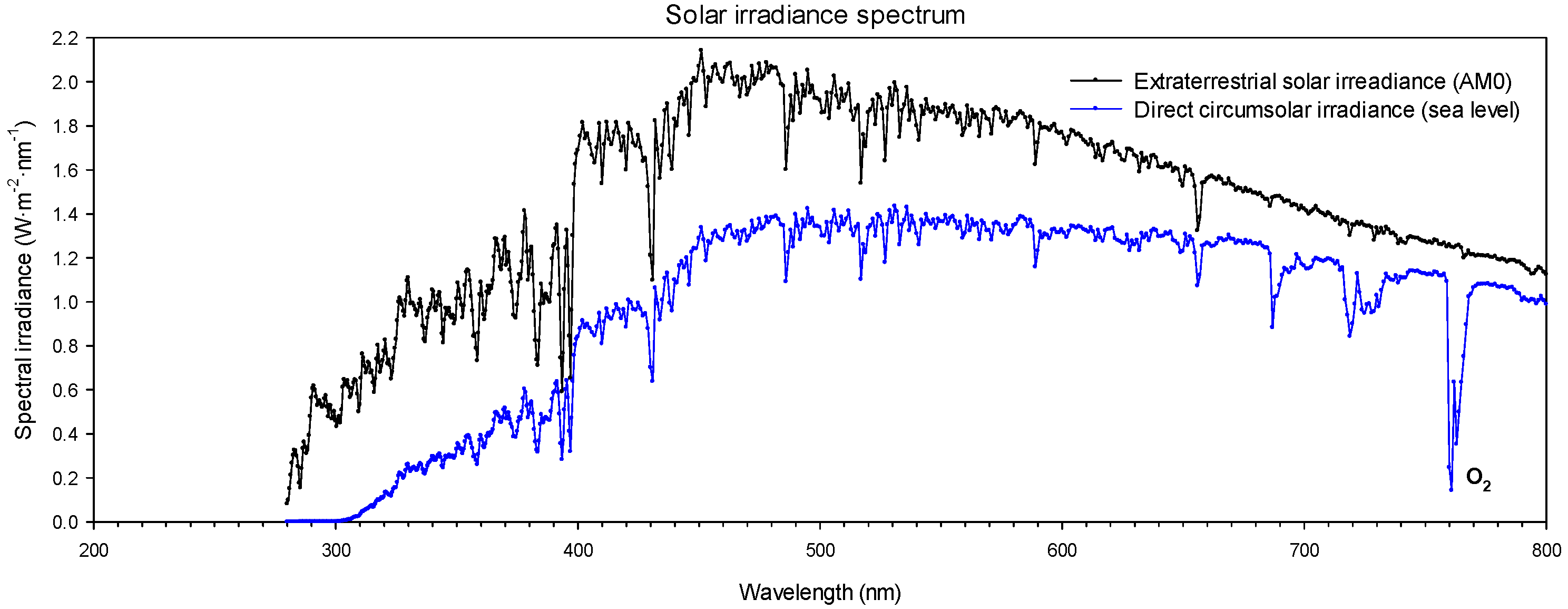

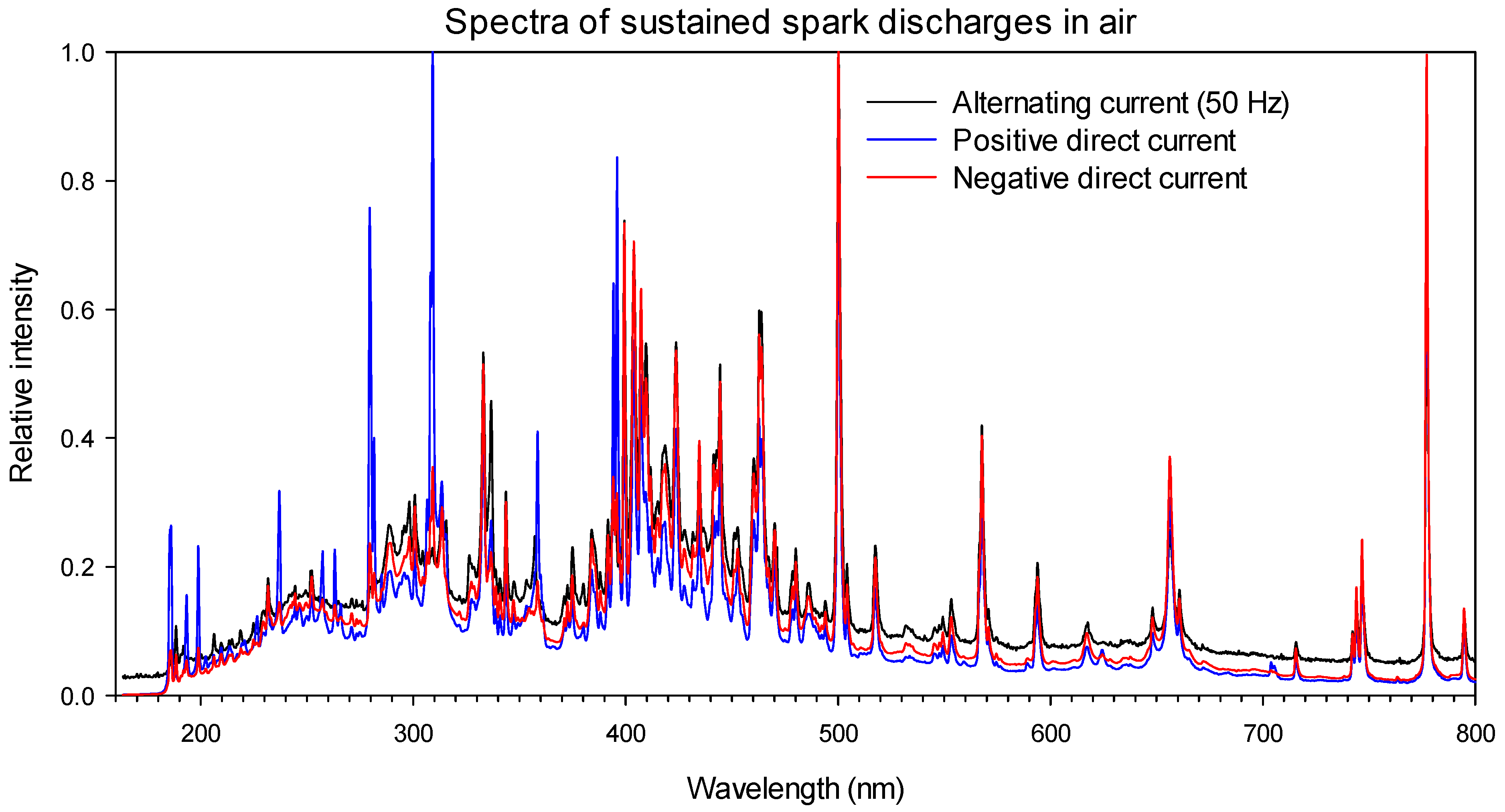
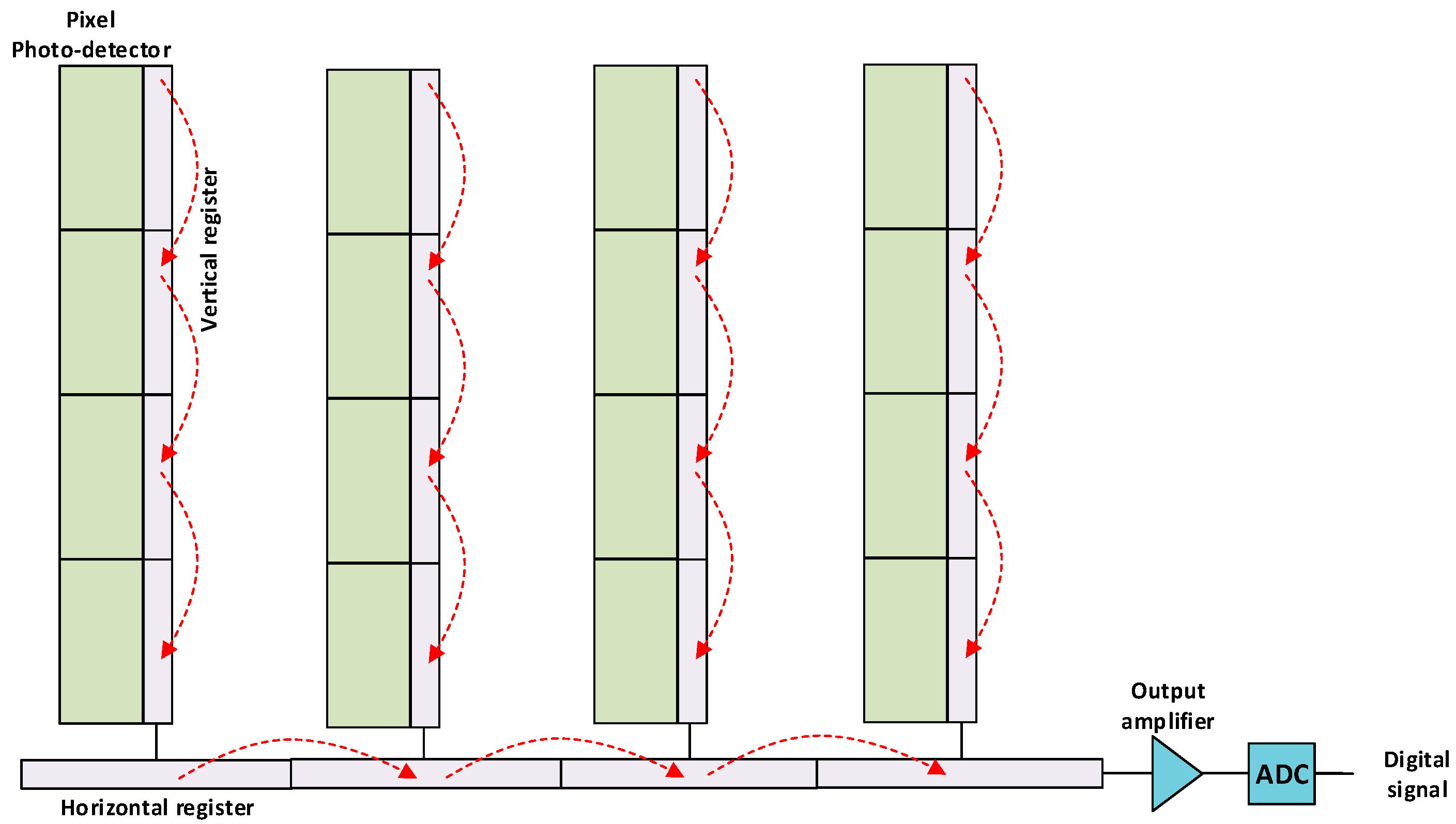
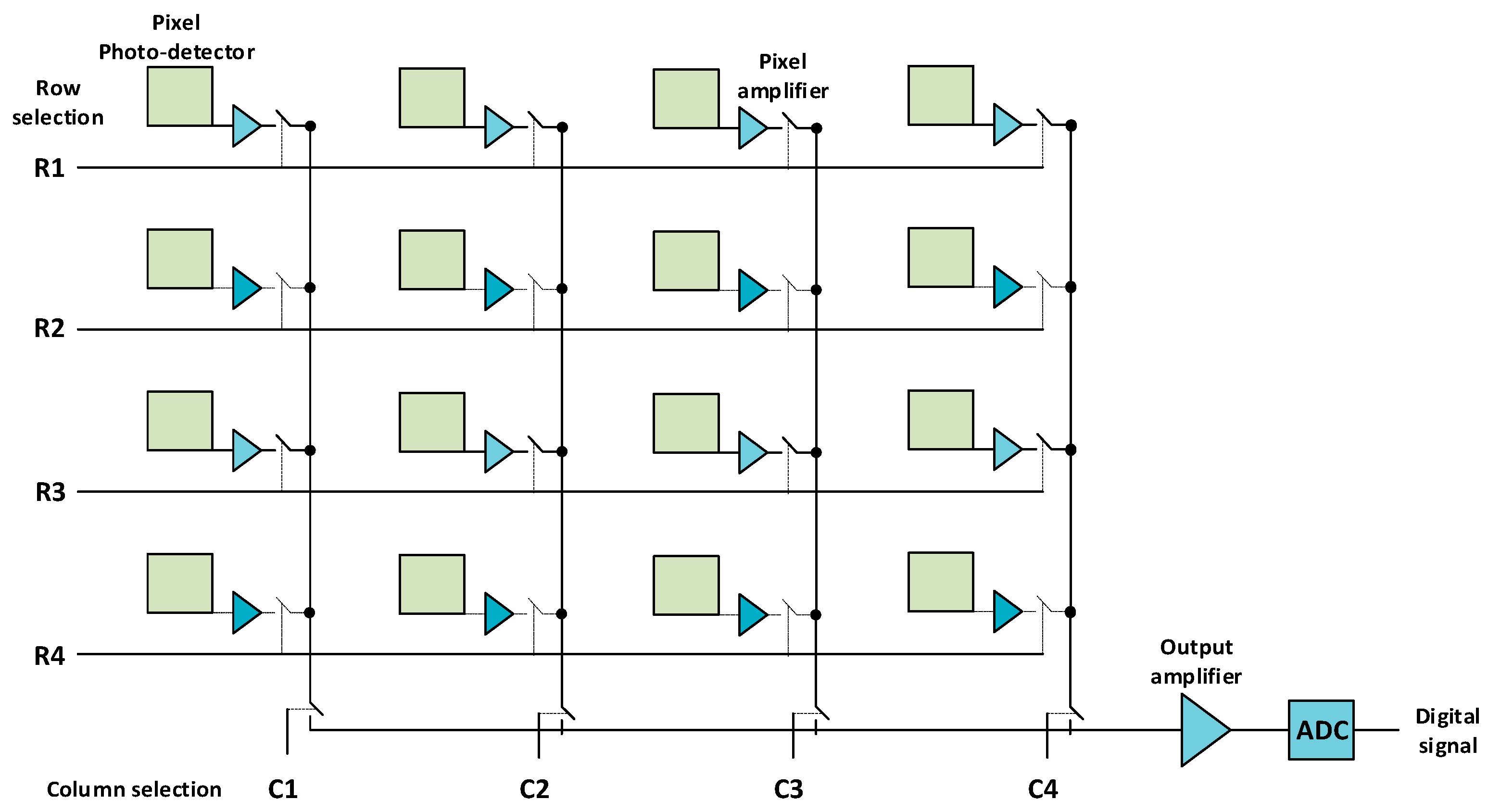

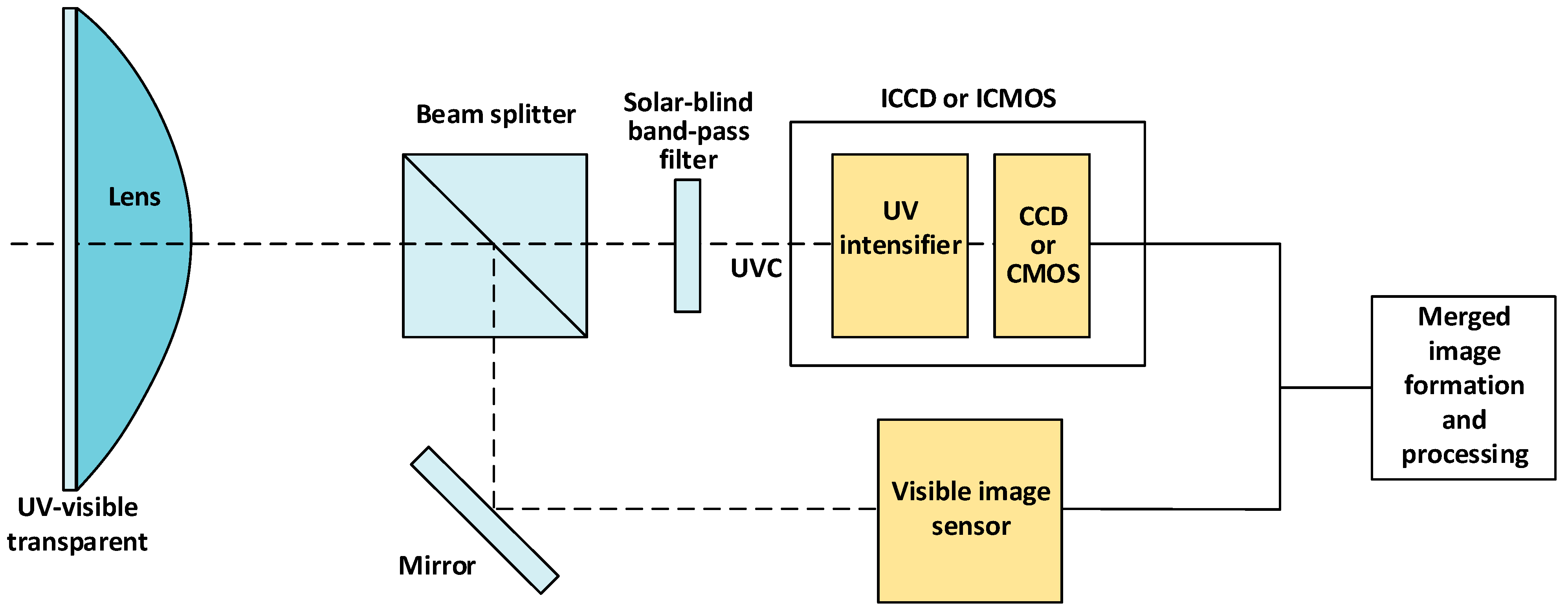
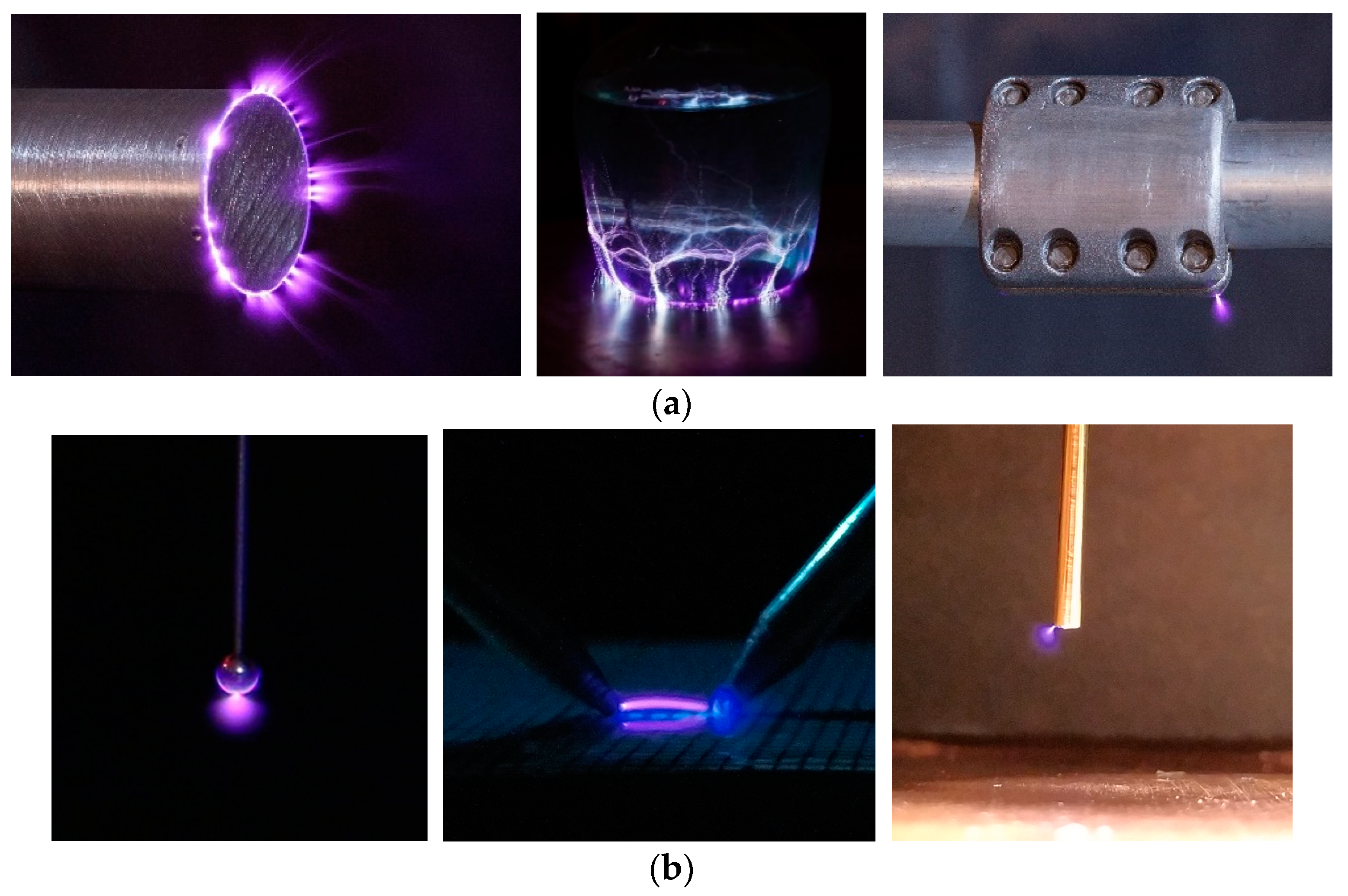
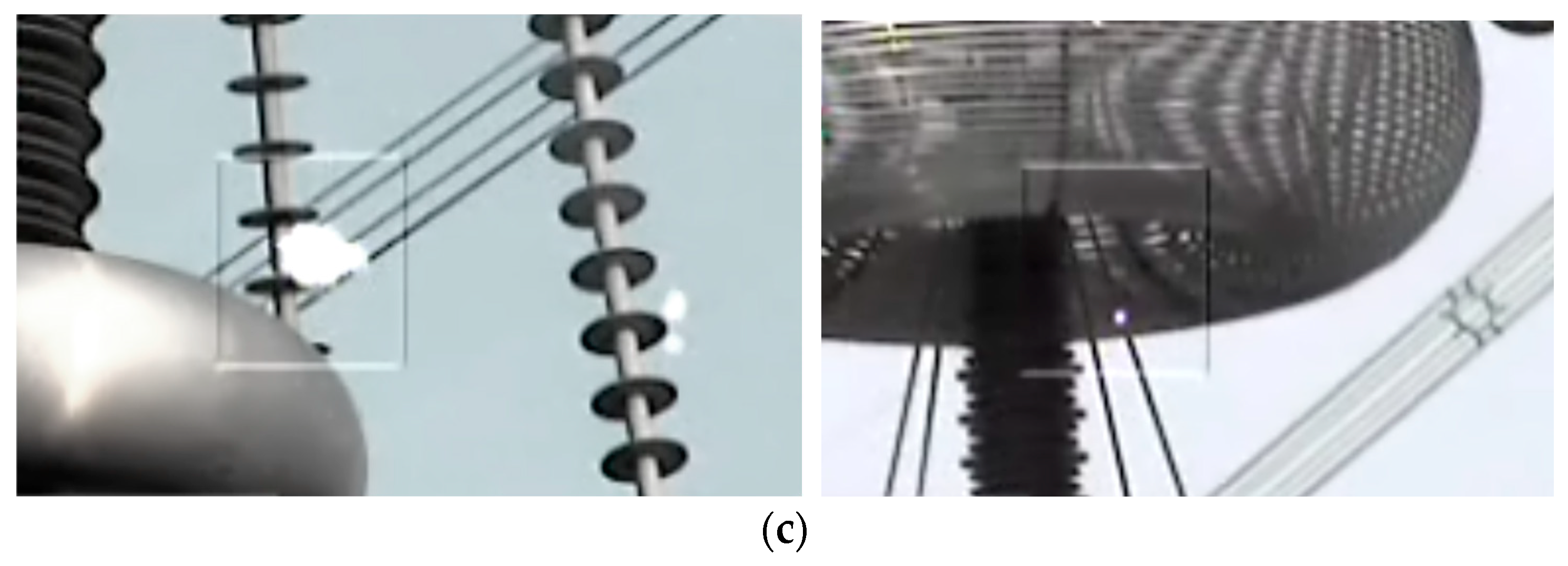
Publisher’s Note: MDPI stays neutral with regard to jurisdictional claims in published maps and institutional affiliations. |
© 2022 by the author. Licensee MDPI, Basel, Switzerland. This article is an open access article distributed under the terms and conditions of the Creative Commons Attribution (CC BY) license (https://creativecommons.org/licenses/by/4.0/).
Share and Cite
Riba, J.-R. Application of Image Sensors to Detect and Locate Electrical Discharges: A Review. Sensors 2022, 22, 5886. https://doi.org/10.3390/s22155886
Riba J-R. Application of Image Sensors to Detect and Locate Electrical Discharges: A Review. Sensors. 2022; 22(15):5886. https://doi.org/10.3390/s22155886
Chicago/Turabian StyleRiba, Jordi-Roger. 2022. "Application of Image Sensors to Detect and Locate Electrical Discharges: A Review" Sensors 22, no. 15: 5886. https://doi.org/10.3390/s22155886
APA StyleRiba, J.-R. (2022). Application of Image Sensors to Detect and Locate Electrical Discharges: A Review. Sensors, 22(15), 5886. https://doi.org/10.3390/s22155886





